China 2015: The 10 Most Impressive Chinese Carmakers at Auto Shanghai (Part 2)
It’s Leopaard, with two A’s.
Last time we had a look at the 10th to 6th most-impressive Chinese carmakers at Auto Shanghai 2015, it’s now time for ranks No. 5 to No. 2. By now, either the carmakers in question have made tremendous progress compared to last year in Beijing, or they are approaching world class. And we’ll start with the “Most Improved” award.
Drumroll, please:
5. (29) Leopaard
(Ranking at the 2014 Beijing Auto Show)
This is my biggest surprise of Auto Shanghai. While in Beijing last year, I discovered this new brand, and it made such progress in the past 12 months that it now deserves a spot in my Top 5 Most Impressive Chinese carmakers, easily earning the “Most Improved” award of the entire Show. But first let’s backtrack a tiny bit. Up until 2014, the brand Leopaard was called Lièbào, meaning cheetah (close enough). Lièbào/Leopaard is a brand of GAC Chengfeng Motor, in turn wholly owned by GAC Group, but was originally a branch of the People’s Liberation Army. Sir yes sir. Changfeng restricted the use of the Lièbào brand to Mitsubishi Pajero variations built under license from Mitsubishi that used to own 15 percent of Changfeng until 2011 when it sold its participation in the company. Not anymore. Leopaard is now free to run — and run fast.
The Leopaard press conference was unusually heartfelt and authentic, with a confident and genuinely motivated female presenter introducing the product and guest speakers with authority, kindness and professionalism. Very far from an automated, nervous delivery that can characterise such roles (I’ve seen a few at the show), this presenter accentuated her speech with flashes of enthusiasm that didn’t feel forced – an achievement in itself. Repetitive expressions in her speech evoked enthralled political rallies (in a good way). We are in China after all. The executives were all very good in their own way and certainly not boring, and absolutely no video nor hand prompts for any of the presenters made the Leopaard press conference the most polished and professionally handled of any Chinese carmaker at the Show.
The entire press conference was delivered with one about-to-be-unveiled CS10 SUV in the background, but in the end it was not just one but rather four examples that drove onto the stage and above the audience at reveal time. This sneaky little mise-en-scene reinforced the goodwill I have toward this brand. As for the CS10 itself, although not a marvel of creative design, it looks easy enough on the eyes front-on and aggressive from the back, which is a difficult task for an SUV. The interior is refined, everything looks and feels polished and well finished, nothing weird or out of place. All-in-all a very well-rounded delivery indeed from Leopaard, light years ahead of their rushed Beijing stand. Run Leopaard run! Now to confirm with sales success. And that’s a whole different story.
4. (2) Hongqi
I still have a soft spot for Hongqi (Chinese for “red flag”) the only true Chinese luxury brand, owned by FAW. Adding on to the retro-cool L5 sedan concept and the H7 sedan, currently the only Hongqi model actually on sale to the public and both already on show in Beijing last year, Hongqi had the very good idea of unveiling the soon-to-be-produced LS5 SUV at Auto Shanghai. Surfing on the current SUV craze in China, I wanted Hongqi to move to the next level for an automaker and it over-delivered.
Far from a bland replica of current SUVs and unlike the H7 — which looks like a spruced-up previous generation Skoda Superb — the LS5 adds personal and typically Chinese touches like the motifs formed by the head and taillights and the detail of its grille. I know some (most?) of you won’t agree with me, but the LS5 is my favorite Chinese model of Auto Shanghai. No less. The Hongqi LS5 is powered by a turbocharged, 4-liter gasoline engine mated to an 8-speed automatic gearbox giving off 381kW (510 hp) and 530Nm (390 lb.-ft). Top speed is 220km/h (136 mph) and 0 to 100km/h are reached in 8.1 seconds.
Hongqi’s heritage — the only custom-made presidential vehicle — is rightfully shown off on its stand with big photographs tracing the history of the brand (see above) and its luxury status shines with a delightfully decorated VIP area only accessible by invitation (I got invited thanks to CCTV, the No. 1 TV channel in China). All looking very posh, refined and sophisticated. It’s all there. Hongqi is one of only a few Chinese brand (the only one?) to have a fantastic story to tell and a unique positioning in the world: it can work up to be synonymous with Chinese sophistication. Not a single car brand can, has or will claim this. Gold.
Hongqi should be careful not to rest on its laurels in a Chinese market that evolves at lightning speed. The LS5 is definitely the right step in the right direction, but if the H7 interior looked great last year in Beijing, it has suddenly aged when compared to new upmarket Chinese models unveiled this year, such as the Geely GC9 — to name one — and we will cover it shortly.
But the main is in the attitude. Again, bonus points for a stand completely separate in location and ambiance from parent FAW. However, it’s time for Hongqi to get the gall to play with the big boys. Great Wall’s SUV brand, Haval, stood alone as the only Chinese brand in an exhibition hall dedicated to SUV manufacturers. Makes sense. Hongqi should have taken a spot in the premium exhibition hall along with Lincoln, Lexus, Cadillac, BMW, Volvo or DS and is starting to feel like a sleeping giant that has doesn’t realize it can actually run. You won’t know until you try, Hongqi.
3. (14) BYD
Last year BYD — backed by Warren Buffett’s Berkshire Hathaway Inc. — was strong, but unsurprising and seemed caught in a bout of duplication of its successful S6, itself a dubious copy of the Lexus RX. This year in Shanghai, Build Your Dreams is back to doing just that, returning to its core capability: energy efficient cars. The three main trends at Auto Shanghai were energy efficient cars, SUVs and youth-oriented designs. Utterly on trend, BYD unveiled two smaller PHEV SUVs to complete its lineup: the Song and Yuan, respectively named after Chinese and Mongolian dynasties. Note both accelerate from 0 to 100 km/h in just 4.9 seconds, a “4.9S” badge proudly proclaiming it on each model’s rear door.
Notice also the bicolor scheme, à la Haval H2 or Renault Captur. Putting energy efficient nameplates in its range front and center, BYD also announced that the Song and the Yuan are PHEV versions of upcoming, more conventional models respectively named S3 and S1. Bonus points for enthusiasm.
But what impressed me at BYD is the clarity of their strategy and their transparency sharing it with the media at Auto Shanghai. The entire press conference materials shown were dubbed in English and explained everything there is to know about the brand, its ambition and the strategy it is employing to meet its goals. BYD’s mission is to “Lead the new energy vehicle industry.” Its Green Mobility Strategy has two aspects: public transportation catered to by pure electric vehicles, and the private market catered to by plug-in hybrids.
Looking back at its 2014 achievements, BYD noted that the Qin was China’s new energy vehicle sales leader with 14,717 units. BYD’s words for 2015 are: “2015 will be big” with planned 50,000 sales of plug-in hybrids, 15,000 pure electric e6 taxis and 6,000 electric buses (keeping in mind BYD now offers public electric transportation in 100 cities and 35 countries including London, Brussels and Rotterdam). In one presentation, BYD clearly showed me what it is aiming at and that, for once (it’s relatively rare for a Chinese manufacturer) its objectives were anchored in reality and logic. BYD wants to Build Your Dreams and it’s starting to get convincing at it.
BYD also had the good idea to spice up its stand with a couple of sporty SUVs actually looking pretty mean like the Tang Sport pictured above in matte black. Finally, I really like the naming structure BYD has chosen for its energy efficient models: using traditional Chinese expressions and characters to baptise them. After the Qin sedan and the Shang MPV (introduced at Beijing 2014 but yet to be released) we now have the Tang, Song and Yuan SUVs. May I suggest later on applying this system to the entire range? That would be a breath of fresh air and a very clear point of differentiation in a Chinese carmaker universe packed with letters and numbers.
2. (17) Geely
We are now looking at the creme de la creme of all Chinese manufacturers present at Auto Shanghai. Geely ranked at a lukewarm No. 17 last year in Beijing because I found them unfocused and confusing. This year, Geely sent a loud and clear message that it was moving upwards into sophistication. I wouldn’t call them premium just yet and by a pretty large margin, but the progress the manufacturer has made in the past 12 months is nothing short of spectacular. Finally the benefits of purchasing Swedish carmaker Volvo a few years back are in the open for all to see. Starting with the stand, giving off a definitely upmarket vibe with posh little carry bags featuring golden handles, a sleek silver and blue color scheme and enthusiastic, yet professionally reserved, hostesses. All cars had their doors open for you by a host who would close them after you. Someone has been visiting the Haval stand in Beijing last year and got some ideas! And that’s a great sign.
But the stand on its own would be far off elevating Geely to 2nd place overall in this ranking. Geely needed a flagship to demonstrate its shift upmarket and it found one with the extremely impressive GC9, designed by Volvo’s head of design, and it shows. The GC9 takes Geely (and all Chinese manufacturers with it) onto a completely different stage, now fully armed to compete with overseas brands. Yes I have said it. It was the question on everyone’s lips in the Chinese media: “Are we there yet?” “Do you think Chinese manufacturers are catching up with foreign ones?” “Can we do this?” In the Geely stand, my answer was a clear and resounding “yes.”
The GC9 interior depicted above is nothing short of astounding for a Chinese manufacturer. Stylish, exhaustive without being confusing, high tech and full of sophisticated notes such as this complete climate control console for rear passengers pictured above. The materials are solid, nice on the touch and comfortable. Very, very impressive indeed. All this for a strikingly low price: the GC9 ranges from 119,800 to 229,800 yuan or USD$19,300-$37,100. Can’t believe what you’re reading? I couldn’t either at first.
But was Geely consistent in its interior quality? Or did it put all its eggs in the same basket? Ranking No. 2 should give you a hint. I was very impressed by the brand’s two hot sellers so far in 2015: the facelifted EC7’s door clomp was the closest to a VW of all Chinese models I tested, and the completely revamped Vision’s glovebox’s slow and soft opening is lightyears ahead of a VW Santana whose glovebox crashes onto your knee with a flat, hollow and definitely cheap “clang!” The Vision is priced between 52,900 and 65,900 yuan (USD$8,500-$10,600) whereas the Santana ranges from 84,900 to 123,800 yuan (USD$13.700-$20.000). Now the coughing of VW’s Chinese sales so far in 2015 and the doubling of Geely sedan sales in the same period makes a lot more sense.
A near perfect 10 for Geely so far. Except for one thing, and unfortunately this is one of my pet hates. The manufacturer smartly killed the Gleagle, Emgrand and Shanghai Englon brands last year to stremline its entire lineup under the Geely brand, choosing the Emgrand logo as its own. However, at Auto Shanghai 2015 Geely still displayed one bright orange Panda Cross with a Gleagle logo! And the cover of the Geely Golden Eagle Cross brochure features a car with a Shanghai Englon logo! Why oh why? You were so close Geely.
Matt Gasnier is based in Sydney, Australia and runs a website dedicated to car sales, trends and analysis called BestSellingCarsBlog.
More by Matt Gasnier
Latest Car Reviews
Read moreLatest Product Reviews
Read moreRecent Comments
- EBFlex It will have exactly zero effect
- THX1136 What happened to the other companies that were going to build charging stations? Maybe I'm not remembering clearly OR maybe the money the government gave them hasn't been applied to building some at this point. Sincere question/no snark.
- VoGhost ChatGPT, Review the following article from Automotive News: and create an 800 word essay summarizing the content. Then re-write the essay from the perspective of an ExxonMobil public relations executive looking to encourage the use of petroleum. Ensure the essay has biases that reinforce the views of my audience of elderly white Trump-loving Americans with minimal education. Then write a headline for the essay that will anger this audience and encourage them to read the article and add their own thoughts in the comments. Then use the publish routine to publish the essay under “news blog” using Matt Posky listing the author to completely subvert the purpose of The Truth About Cars.
- VoGhost Your source is a Posky editorial? Yikes.
- Fed65767768 Nice find. Had one in the early-80s; loved it but rust got to it big time.Still can't wrap my head around $22.5K for this with 106,000 km and sundry issues.Reluctant (but easy) CP.




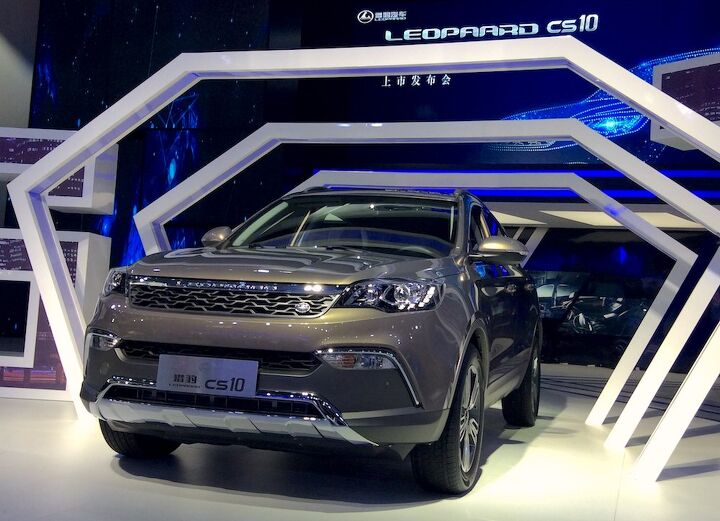




































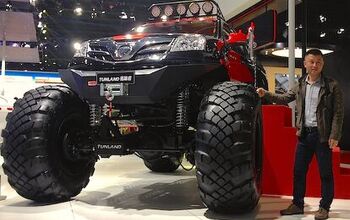
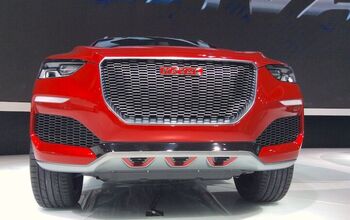
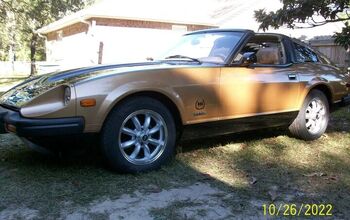
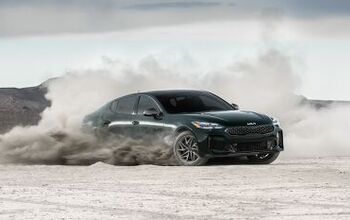
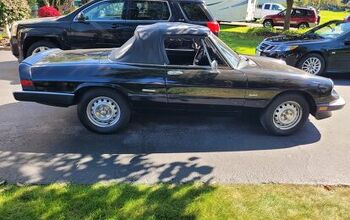
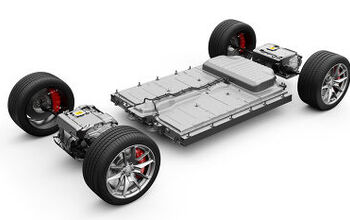

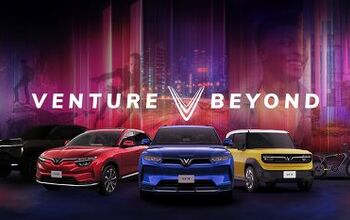
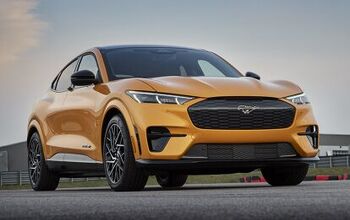



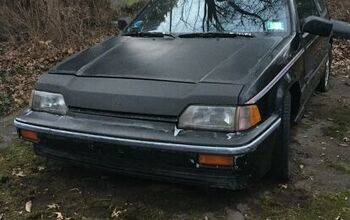
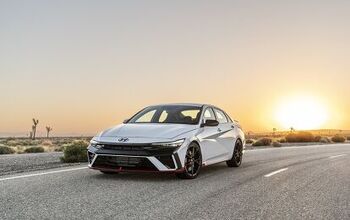
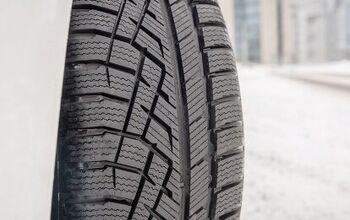
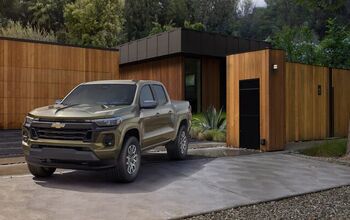
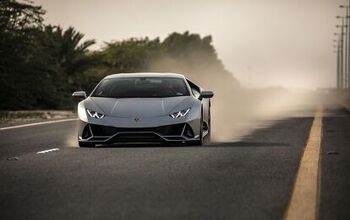
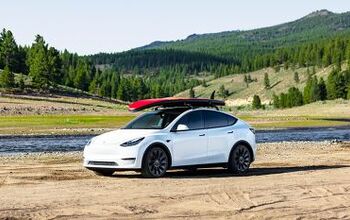
Comments
Join the conversation
That Geely shock-wave grille has gotta go.
The BYD Song looks exactly like my wife's Hyundai Elantra Touring. Don't tell her, she'll want one.